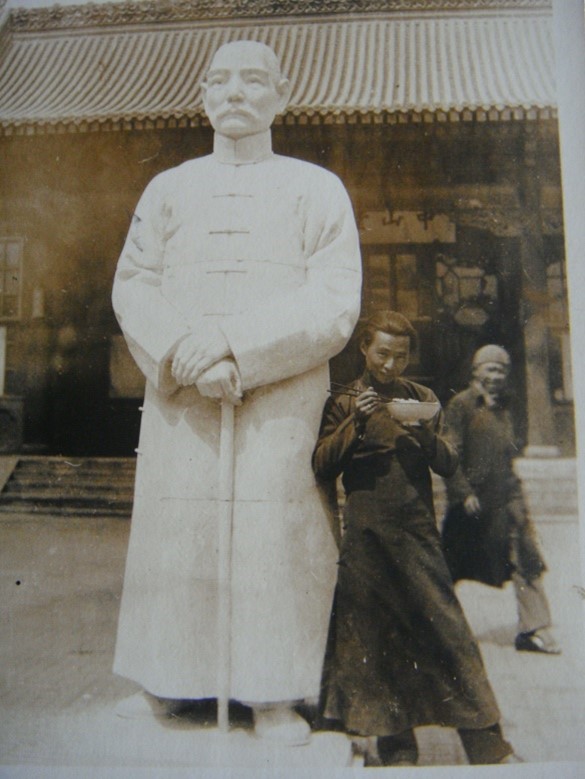
3. IN CHINA, A CAREER IS TAKING SHAPE
1. Diversified production
From this period, we will remember a varied production, both in terms of the materials used and the styles approached.
In parallel with his studies, Yan continued to carve on wood and participated in the first national art exhibition subsidized by the Ministry of Education in Shanghai in 1929. He presented two religious figurines – the Immortal Nanji and the Buddha Maitreya that the N°2 of the magazine “Art Exhibition” particularly noticed.

Buddhist Maitreya
April 1929 Exhibition – Shanghai

February 23 Invitation from the Ministry
to participate in the exhibition
Invitation letter from the Ministry of Education
The original of the invitation letter was sent by the Art Exhibition of the Grande Académie.
The former Art Exhibition of the Grande Académie has been taken over by the Ministry of Education. The exhibition is due to start on March 25 of this year [1929] and at the moment we are actively preparing the grouping of the works and the presentation of the collections. According to our policy, works whose creators have received a special invitation are not subject to approval. We know that you are a recognized and talented artist and that is the reason why we are sending you this special invitation to exhibit your works, so that the public can see and appreciate them.
Please send us a list of the works you would like to exhibit in advance. We thank you for this and offer you our greetings.
Attached are the rules relating to the collection of works and a form to be completed by the works you have chosen.
The Chairman of the National Exhibition Committee of the Ministry of Education
Jiang Meng Lin on February 23
In the same year, Yan assisted his teacher, Jiang Xiaojian, in the creation of a bronze equestrian statue of General Chen Yingshi in Hangzhou. Erected near the West Lake, it was destroyed in the 1960s.

Jiang Xiaojian with the model of his statue

Statue of General Chen Yingshi in Hangzhou
Yan Dehui also made busts of which no trace has been lost to this day. In the few surviving photos of the period, we can already see a great mastery of portraiture as well as a realistic approach borrowed from the West – expressive faces and precise rendering of the flesh.

In 1931, the Shanghai Pictorial Journal published his bas-relief of Gandhi (1869-1948), the spiritual and political guide of the Indian independence movement.
2. Creation of the Sun Yat-sen statue in Lanzhou
Yan also practiced his art in the field of monumental sculpture, developing a more synthetic approach. In 1935, the Guomindang, a political party created in 1912 by Sun Yat-sen following the 1911 Revolution, decided to erect a bronze statue of its founder, ten years after his death, in Lanzhou, Gansu province. He entrusted the responsibility to the Gansu National Factory, which commissioned Yan Dehui to design and build it. It was to be erected in front of the door of the Prefecture. After preliminary studies and validation of his proposals, Yan went to Lanzhou in the summer of 1936.

Contract between Gansu National Plant and Yan Dehui




Preparatory drawings
Despite difficult construction conditions and an intense workload due to extremely short deadlines, the statue was finally completed in early 1937. In 1939, it was moved to the Zhong-Shan Forest, and in 1956 it was moved to the Sun Yat-sen Memorial in Wuquanshan Park, where it still stands.

Creation of the clay statue

Bronze statue of Sun Yat-sen erected in 1939, after its author left for France in 1938

Second version of a statue of Sun Yat-sen en plâtre par Yan Dehui.
His trace has been lost

Lanzhou 1993. From left to right, Yan Dehui’s daughter and niece




